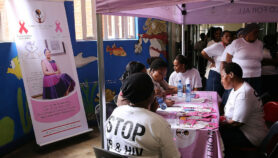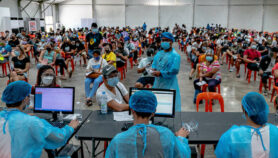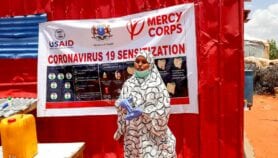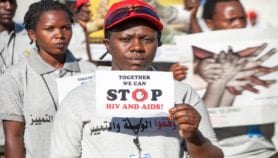28/07/23
Climate change worsening HIV control in Asia
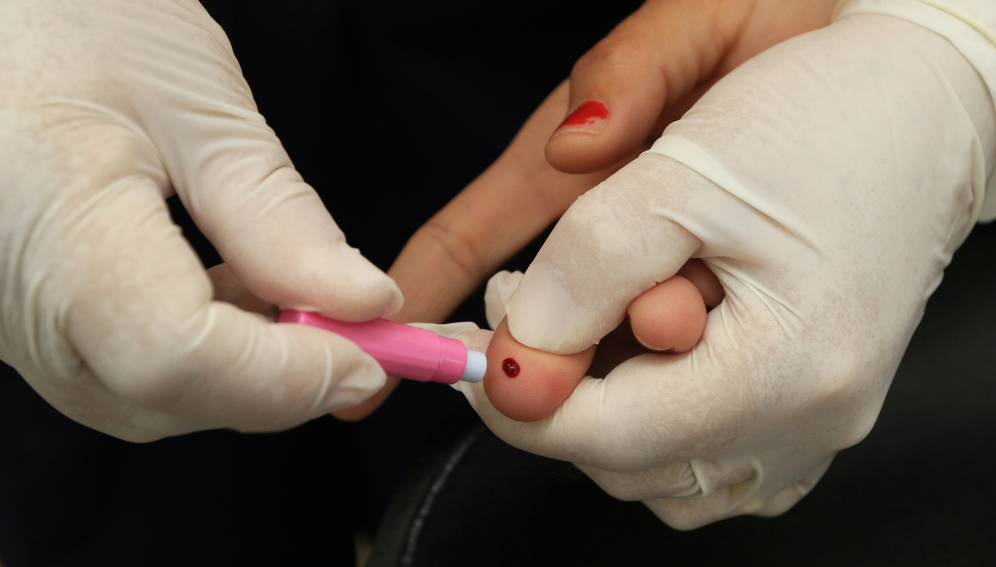
By: Neena Bhandari
Send to a friend
The details you provide on this page will not be used to send unsolicited email, and will not be sold to a 3rd party. See privacy policy.
[BRISBANE] Climate change-driven extreme weather events, sea level rise, changes in temperature, and air and water pollution are impacting control of HIV in the Asia Pacific region, a science gathering heard.*
The warning comes amid unprecedented heatwaves, as the UN warns the world has already warmed by 1.1 degrees Celsius since pre-industrial times.
“Those most affected by climate change are also those most prone to communicable diseases,” said Kiyohiko Izumi, team leader for HIV, viral hepatitis and sexually transmitted infections in the World Health Organization’s (WHO) Western Pacific Regional Office.
Izumi was speaking at meeting on how climate change is impacting the control of HIV in the Asia Pacific region, organised by WHO during the 12th International AIDS Society Conference on HIV Science, held in Brisbane, Australia, this week (23-26 July).
“Climate change and related disasters as upstream factors can affect all aspects of HIV, primarily leading to the increased vulnerability to HIV and decreasing coping ability,” Izumi said.
While the overall trend of HIV infections has declined, in some countries such as the Philippines, new infections are rising. From 2001 to 2021, the number of new HIV infections in the Philippines more than tripled.
“It’s important to note that the Philippines is not only a hotspot for HIV and AIDS, but it’s also a climate hotspot,” said Renzo Guinto, associate professor of global public health and integral director of the planetary and global health program at St. Luke’s Medical Center College of Medicine in the Philippines.
“We know that climate change impacts human health in many different ways,” he added.
In 2022, his team published a study on the connections between climate change and HIV/AIDS.
“Extreme weather events impact food security and lead to forced migration or displacement of populations and also lead to the disruption of health services,” said Guinto, a member of the national panel of technical experts of the Philippines climate change commission.
“All these three – food, mobility and health services – can then lead to indirect impacts, for instance on people living with HIV/AIDS, which then eventually can affect their overall outcomes.
“There’s still no evidence showing that HIV in itself is a climate-sensitive infectious disease, but there are many other climate-sensitive infectious diseases, such as malaria, Zika, Chikungunya, that may interact with HIV/AIDS,” he added.
Fungal infections
Warming temperatures and other climate effects are also leading to a risk of increase in some invasive fungal diseases.
“Fungal infections and HIV fungal infections are a leading cause of illness, hospitalisation and death in people living with advanced HIV disease,” said Nathan Ford, a scientific officer at the WHO.
“There is a need for a one-world approach that helps us to understand the effects of global warming on the spread of species that can serve as intermediate hosts, notably bats and birds, for fungal human pathogens,” he added.
Ford pointed to WHO guidelines to deal with HIV associated fungal infections, including Talaromycosis.
“Talaromycosis … is the leading cause of HIV-associated deaths in China, Thailand and Vietnam, incidents increasing by up to 73 per cent in the rainy months in those countries and hospitalizations also strongly associated with humidity,” he added.
While HIV research has mainly focused on prevention, treatment, stigma reduction, and vaccine development, experts highlight the need for investment in research to explore the direct relationship between climate change and HIV.
Sindhu Ravishankar, vice president of programmes and research at Fast-Track Cities Institute, Association of Providers of AIDS Care in Washington DC, said the rapid urbanisation projected for the Asia Pacific and sub-Saharan Africa regions will create new megacities and home to large numbers of vulnerable populations.
This urbanisation can lead to heightened inequalities, affecting low-income households the most, with food insecurity being linked to HIV leading to substance use and poor mental health, Ravishankar said. Rural to urban migration also contributes to changes and expansion of sexual networks, leading to an increase in transmission, she added.
*This article was corrected on 31 July 2023 to change the dateline from Sydney to Brisbane.
This piece was produced by SciDev.Net’s Asia & Pacific desk.








